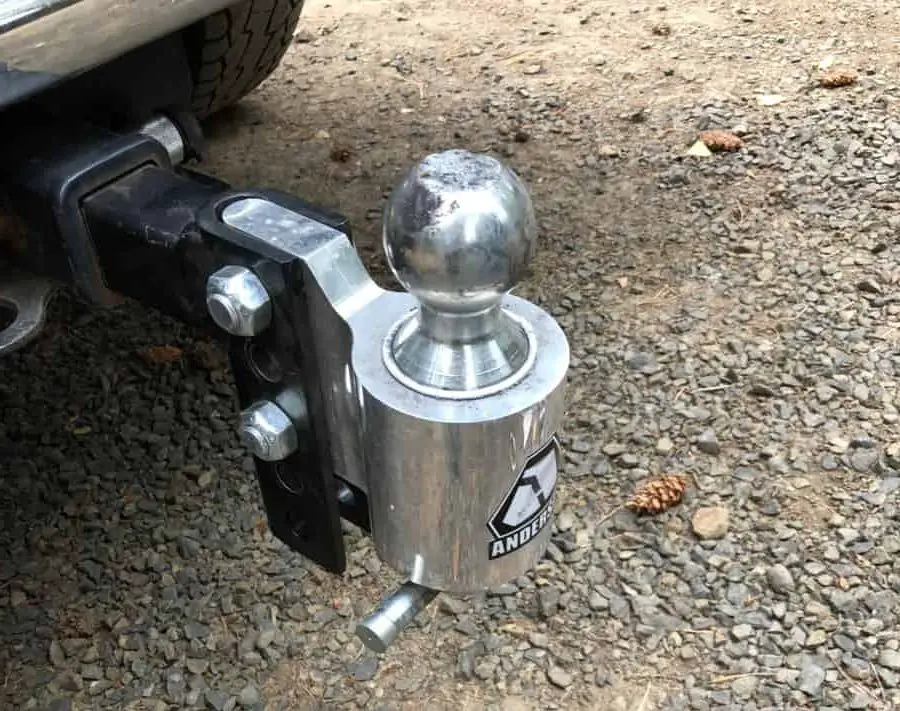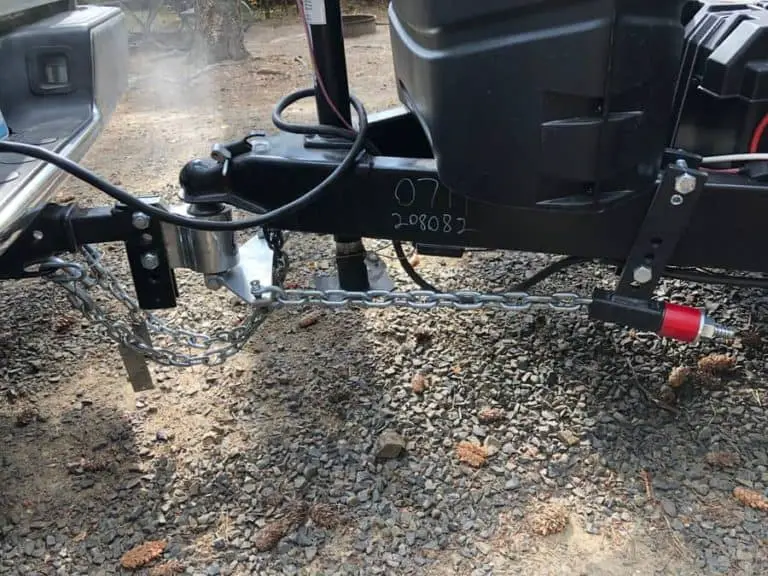Does a Weight Distribution Hitch Reduce Payload on My Tow Vehicle?
Whether you’re a trucker, RVer, or haul trailers as part of your daily job description, things can get dangerous at times. A nifty tool invented to make towing as safe and easy as possible is the weight distribution hitch. While weight distribution hitches have a lot of capabilities, there are certain things it can’t do.
Weight distribution hitches will not increase the payload capacity of your vehicle. They are designed to spread the hitch weight of your trailer from just the rear axle to both the front and rear axle. By distributing the weight, your towing experience will be safer and easier on your vehicle.
Keep reading if you’re still curious about how a weight distribution hitch affects payload and towing capacity. This article will delve into what exactly payload capacity is and look at the difference between it and towing capacity. We’ll also look at the right time and place to use a weight distribution hitch.
What is Payload on a Towing Vehicle?
First off, when determining if a weight distribution hitch reduces payload capacity, we need to first know what it is. When it comes to towing, there are many different terms you should be aware of. There’s towing capacity, payload capacity, tongue weight, trailer dry weight, gross vehicle weight capacity, and more. One of the most important terms to know, however, is payload or payload capacity.
Simply put, payload refers to the total weight of everything inside your towing vehicle. That includes you, your passengers, and anything else that’s in the vehicle. In a truck, it includes both the cargo items and anything you have in the bed of the truck. For a car or SUV, it includes anything you’re carrying in your trunk.
If you’re towing a trailer or RV, the payload also includes the tongue weight of whatever you’re towing. For example, let’s say that you’re driving a Subaru Outback with a payload capacity of 1,000 pounds, which is about average for a small SUV or crossover vehicle.
Inside your Subaru, there’s you, your spouse, a dog, and camping supplies. You’re also towing a small popup camper that weighs 1,500 pounds and has a tongue weight of 150 pounds. Here’s how to figure out if you’re at or exceeding payload capacity.
- You, plus your spouse and pet, have a combined weight of 425 pounds.
- The trailer you’re towing has a tongue weight of 150 pounds, plus you have a small cooler attached to the front of the trailer that adds another 25 pounds.
- In the trunk of your Subaru, you’re carrying camping supplies and clothing that equals 200 pounds.
- In the cargo compartment of your car, you have bags of food, games, snacks, books, and other traveling supplies that equals another 100 pounds.
- Your total current payload is 900 pounds, which is 100 pounds less than the total payload capacity your Subaru is capable of.
- While you’re ok in the scenario listed above, let’s say that you also have two kids with you, which puts the total weight at 1,100, which puts you over the payload capacity.
Unfortunately, if you exceed the allowed payload capacity of your vehicle, a weight distribution hitch isn’t going to help.
How to find your payload capacity on your vehicle?
To find the payload capacity of your vehicle, open the drivers door. There will be a sticker that will show you the payload capacity of your vehicle. If it is not located there, have your VIN ready and use one of the websites below:
Difference Between Payload and Towing Capacity
It’s important to note the difference between payload capacity and towing capacity. As we just covered, payload capacity refers to the total amount of weight that your towing vehicle can safely handle inside the vehicle. It also includes any weight that’s resting on the bumper of the vehicle, which is why tongue weight gets added in.
Towing capacity, on the other hand, refers to how much weight your vehicle can safely tow. This consists of the total dry weight of the trailer or RV you’re towing, including the tongue weight. It also includes the weight of anything you have inside the camper, such as cargo, camping equipment, or tools. While these extra items aren’t figured into the dry weight of your camper, the tongue weight is.
How Does a Weight Distribution Hitch Affect Payload?
Because a weight distribution hitch is only designed to help when you’re towing something behind you, it has no effect on the payload. There’s nothing you can do to increase the allowed payload capacity of your towing vehicle. The number is set in stone, and it’s up to you to stay at or below the payload capacity.
Lets say your tongue weight on your trailer is 500 pounds. If you don’t use a weight distribution hitch, you will add 500 pounds of payload to your vehicle which will sit only on the rear axle.
If you use a weight distribution hitch, your hitch weight is still 500 pounds, but the weight distribution hitch will distribute it between the front and rear axle. This will cause your vehicle to break, steer, and handle better than if it were just on the rear.
If you exceed the payload of your towing vehicle, the only option you have is to take items out of the vehicle. By removing items and lowering the weight inside the towing vehicle, you can stay within the allotted payload range.
Does a Weight Distribution Hitch Change Towing Capacity?
While a weight distribution hitch doesn’t reduce the payload of your towing vehicle or increase payload capacity, it does have an effect on towing capacity.
Technically speaking, a weight distribution hitch doesn’t increase the towing capacity of your vehicle. However, it does allow your towing vehicle to tow more weight by performing at its best. A weight distribution hitch takes the weight off the rear of your towing vehicle and evenly distributes it between the bumper, the rear axles, and the front axles.
Doing this doesn’t technically increase towing capacity, but it does increase the amount of weight you can safely tow. This happens because excess weight is now being distributed through the hitch and bumper, as well as the rest of your vehicle. It can increase the amount you can safely tow by 10% to 20%.
How Much Weight Does a Weight Distribution Hitch Take Off?
This is another tricky question because a weight distribution hitch doesn’t necessarily take the weight off of what you’re towing. Instead, it takes the weight off of the axle of your towing vehicle and puts it on the rear and front axles. This effectively redistributes roughly 40% to 50% of the trailer and tongue weight to the front of your vehicle. As such, you now have a higher towing capacity with a weight distribution hitch than you do with a standard one.
For example, a hitch with a towing capacity of 10,000 pounds with a standard hitch can support up to 12,000 pounds with a weight distribution hitch.
Should You Always Use a Weight Distribution Hitch?
While it’s never a bad idea to use a weight distribution hitch, it isn’t always required. In our first example, where the Subaru was towing a 1,500-pound trailer, the trailer and tongue weight aren’t significant enough to require a weight distribution hitch. As a rule of thumb, if the weight of whatever you’re towing is half the weight of your towing vehicle, you should have a weight distribution hitch.
Be the first to be notified about FREE tips, hints, coupon codes, and email-exclusive information. All for FREE!









